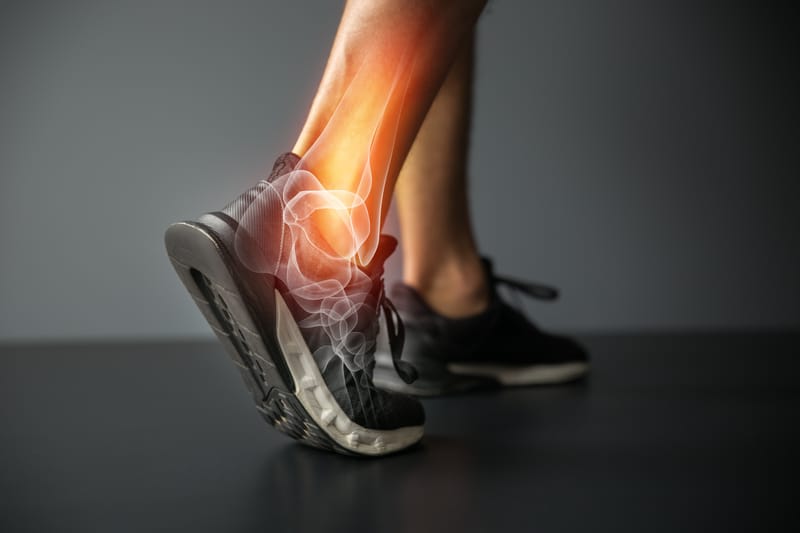
Ankle injuries are among the most commonly diagnosed injuries in athletes and active people.
A sprain refers to the stretching, rupture, or damage to a ligament in the ankle. Ligaments are thick bands of tissue that connect bones, usually crossing over the bones. Sprains can be medial, lateral, or high ankle sprains. Injuries to the foot and ankle can occur during running, side-to-side cutting or from direct trauma. The following are the risks:
• Inversion ankle sprains can damage the ankle ligaments and can also be associated with peroneal tendon injuries and fractures.
• Ankle fractures, metatarsal fractures, and Lisfranc fractures can "sideline" athletes and others and sometimes require surgery.
• Contusions and bone bruises may also result from high impact.
• Overuse and excessive training can lead to heel pain (plantar fasciitis), Achilles tendonitis, sesamoiditis, stress fractures, and posterior tibial tendonitis (or PTTD).
injuries are among the most commonly diagnosed injuries in athletes and active people.
A sprain refers to the stretching, rupture, or damage to a ligament in the ankle. Ligaments are thick bands of tissue that connect bones, usually crossing over the bones. Sprains can be medial, lateral, or high ankle sprains.
Injuries to the foot and ankle can occur during running, side-to-side cutting or from direct trauma. The following are the risks:
• Inversion ankle sprains can damage the ankle ligaments and can also be associated with peroneal tendon injuries and fractures.
• Ankle fractures, metatarsal fractures, and Lisfranc fractures can "sideline" athletes and others and sometimes require surgery.
• Contusions and bone bruises may also result from high impact.
• Overuse and excessive training can lead to heel pain (plantar fasciitis), Achilles tendonitis, sesamoiditis, stress fractures, and posterior tibial tendonitis (or PTTD).